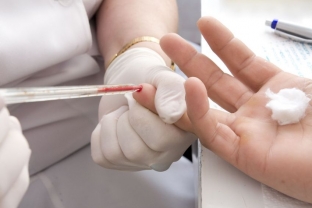Pregnancy is certainly a wonderful period in a woman's life. The realization that another small heart is beating under her heart makes a woman beautiful and the happiest during this period. At the same time, pregnancy is a rather strong burden for the female body, since all its systems and organs must work doubly: for the benefit of the expectant mother and baby. During this period, women quite often develop pathologies of various organs that require the earliest possible detection and effective treatment. One of these pathologies is the occurrence of anemia in pregnant women, the symptoms and methods of treatment of which you can read on estet-portal.com.
Peculiarities of the course and treatment of anemia in pregnant women
Anemia in pregnant women is a fairly common pathological condition: the disease occurs in 20-90% of pregnant women in different countries. Anemia itself is a condition in which the amount of hemoglobin in the blood decreases. As you know, hemoglobin transports oxygen to the organs and structures of the human body. Against the background of anemia in pregnant women, oxygen saturation of not only the organs of the expectant mother, but also the fetus decreases, as a result of which the risk of developing intrauterine pathologies increases significantly. Therefore, diagnosis and treatment of anemia in pregnant women should be carried out as early as possible.
Anemia in pregnancy:
- how does true anemia in pregnant women differ from false anemia;
- what are the symptoms of anemia in pregnant women;
- conservative treatment of anemia in pregnant women.
How does true anemia in pregnant women differ from false anemia
Anemia in pregnancy can be false and true. With false anemia, a decrease in the hemoglobin content in the blood occurs due to an increase in the volume of circulating blood, and, consequently, a change in the ratio of plasma to the volume of red blood cells. This condition is called hydremia, while the symptoms of anemia in a pregnant woman do not occur. True anemia develops in pregnant women, often against the background of fluid loss during toxicosis and impaired absorption of iron in the intestine. In such cases, there is a clinical picture of iron deficiency anemia. If the pathology is diagnosed in the early stages of pregnancy, most often such anemia occurred before pregnancy. True anemia, which is associated with pregnancy, manifests itself in the second half.
What are the symptoms of anemia in pregnant women
The severity of the clinical picture in anemia in pregnant women depends on its severity. For a long time, patients with anemia may not present any complaints, since the decrease in hemoglobin may be insignificant and symptoms of the disease may not occur. Subsequently, symptoms such as weakness, shortness of breath, dizziness and fainting, hair loss, cracks in the corners of the mouth, brittle nails and other trophic changes may appear. In this case, anemia is characterized by changes in the following blood parameters:
- hemoglobin content less than 115 g/l;
- erythrocyte count less than 3.7*10¹²/l;
- color score below 0.85;
- serum iron level less than 10 mmol/l.

Conservative treatment of anemia in pregnant women
Anemia in pregnant women is treated on an outpatient basis, such patients do not require hospitalization. An important role is played by the nutrition of a pregnant woman: she needs to consume at least 120 g of protein per day. Drug therapy for anemia in pregnant women involves the appointment of iron preparations, which are recommended in tablets or capsules. Treatment of anemia is a lengthy process: in most cases, the level of hemoglobin in the blood rises three weeks after the start of medication, and is completely normal only after 10 weeks. It is important not to stop the treatment of the patient within 3 months after the normalization of blood counts, as possible blood loss during childbirth and the period of feeding the child can cause a relapse of anemia.






Add a comment